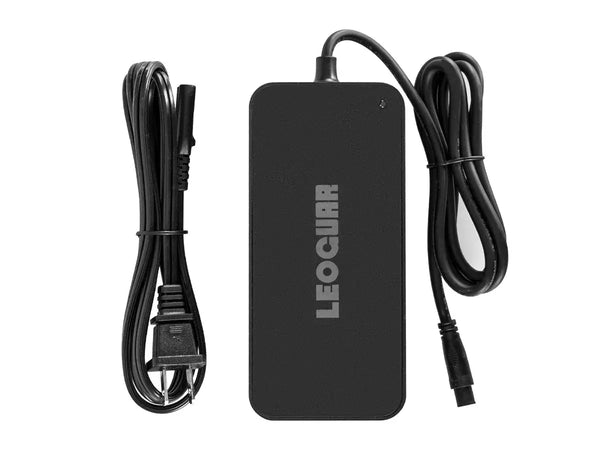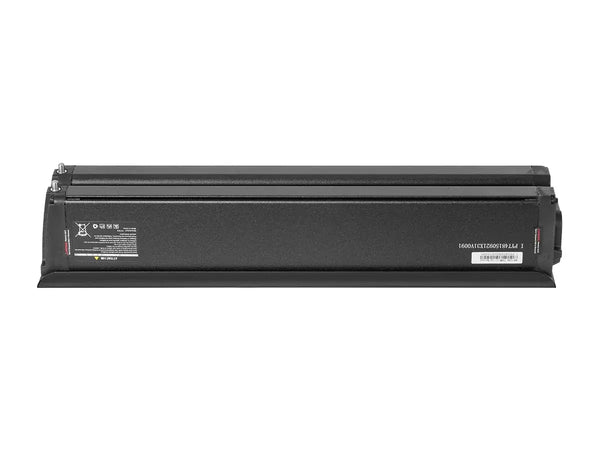
Electric Bike Charger: Are They Universal? Key Facts
Let's get straight to the point: No, electric bike chargers are not universal. The idea of a one-size-fits-all charger is a myth. Using the wrong electric bike charger can be ineffective at best. At worst, it can destroy your expensive battery, void your warranty, or spark a fire that could burn down your home. Your e-bike battery is the most expensive and sensitive part of your ride. This guide will walk you through exactly why chargers differ, how to select the correct replacement, and the essential practices for charging safely.
Four Key Mismatch Factors
Think of your charger and battery as a lock and key. For the system to work safely and effectively, four critical factors must align perfectly. A mismatch in any one of these can lead to failure or disaster.
Matching Voltage (V)
Voltage, measured in volts (V), is the electrical "pressure" your charger delivers. The output voltage of your electric bike charger must match the nominal voltage of your e-bike's battery. Common e-bike battery voltages are 36V, 48V, and 52V. You will find this number printed on both your battery and your original charger. The consequences of a mismatch are severe. A charger with a lower voltage than your battery simply won't have enough pressure to charge the cells. It will do nothing. Conversely, using a charger with a higher voltage is a recipe for disaster.
Understanding Amperage (A)
Amperage, measured in amps (A), is the "flow rate" or current of electricity. It determines how quickly the charger can fill your battery. A 4A charger will charge a battery roughly twice as fast as a 2A charger. Using a charger with an amperage that is too high for your battery can cause it to overheat. This excess heat accelerates the degradation of the lithium-ion cells, shortening the battery's overall lifespan and reducing its capacity. For a deep dive into the science, you can learn more about how lithium-ion batteries are charged. As a rule, it is safe to use a charger with a slightly lower amperage than the original—it will just charge more slowly.
The Right Connector Plug
Unlike the smartphone industry, which has largely standardized on USB-C, the e-bike world has no single standard for charging connectors. This physical connection is a major source of incompatibility. Even if two plugs look similar, they may be wired differently, with positive and negative pins in different locations.
Common connector types you might encounter include:
* XLR: A robust, 3-pin connector often found on higher-end systems.
* RCA: A simple, single-pin plug that looks like an old stereo connector.
* Coaxial (Barrel Plugs): These come in many different diameters and are very common, but their size must be an exact match.
* Proprietary Connectors: Many brands like Bosch, Shimano, and Specialized design their own unique plugs to ensure system integrity.
Forcing the wrong plug can damage the pins on both the charger and the battery port. This leads to a poor connection or a dangerous short circuit.
The Role of the BMS
The Battery Management System (BMS) is the "brain" inside your battery pack. This crucial electronic circuit protects your battery from a range of hazards, including overcharging, over-discharging, overheating, and short-circuiting. Some advanced e-bike systems use "smart" chargers that communicate directly with the BMS, exchanging data to optimize the charging curve and enhance safety.

Dangers of Knock-Off Chargers
The temptation to save money on a cheap, "universal" charger from an online marketplace is understandable. However, the risks are immense. These non-certified knock-offs are one of the primary causes of e-bike-related incidents.
The Reality of Fire Risk
Lithium-ion battery fires are a serious and alarming reality. These events are often traced back to faulty charging equipment. Cheap, uncertified chargers are frequently manufactured without the essential safety circuits that prevent overcharging and manage heat. When these fail, they can trigger a thermal runaway event in the battery—a violent and difficult-to-extinguish chemical fire. Major safety organizations have issued numerous warnings on this topic. Reports from the U.S. Consumer Product Safety Commission (CPSC) highlight the growing number of fires linked to micromobility devices.
Preventing Battery Degradation
Even if a cheap charger doesn't cause a fire, it can silently destroy your investment. Quality chargers provide clean, stable power. Knock-offs often deliver "dirty" power with fluctuating voltage and current. This electrical noise, combined with a lack of proper charging cut-off mechanisms, slowly damages the battery cells. As a result, the battery's capacity and overall lifespan are dramatically reduced. From our first-hand experience in the service shop, we have seen batteries that should last for 800 charge cycles fail after just 200 cycles due to consistent use of a low-quality, third-party electric bike charger.
Warranty and Insurance Risks
Nearly every e-bike manufacturer's warranty explicitly states that it is voided if you use a non-original or non-certified charger. If your battery or electrical system fails, the first thing a service center will check is what charger you have been using. Furthermore, in the tragic event that an uncertified charger causes a fire, your homeowner's or renter's insurance provider could potentially deny your claim, leaving you with the full financial burden of the damage.
Finding the Right Charger
Now that you understand the "why," here is the "how." Follow this simple, three-step process to identify and purchase the correct, safe replacement charger for your electric bike.
Step 1: Check Your Equipment
The best source of information is your original equipment. If you still have your original charger, find the sticker or label on its case. Write down the two most important values:
1. OUTPUT Voltage (V): It will say something like "Output: 42V" for a 36V battery, or "Output: 54.6V" for a 48V battery. The charger's output voltage is always slightly higher than the battery's nominal voltage.
2. OUTPUT Amperage (A): It will say something like "Output: 2.0A".
Next, look at the label on your battery pack to confirm its nominal voltage (e.g., "36V" or "48V"). Finally, take a clear, well-lit photo of the metal connector plug at the end of the charger's cord.
Step 2: Use Our Checklist
Use this table as your guide when evaluating a potential replacement electric bike charger. A mismatch on any of these points is a red flag.
| Factor | What to Check | Why It's Critical |
|---|---|---|
| Voltage (V) | The charger's output voltage must be compatible with your battery's nominal voltage. | Non-negotiable. A mismatch will either fail to charge or will destroy the battery. |
| Amperage (A) | Should be equal to or slightly lower than the original. Do not exceed the original amps. | Higher amps can cause overheating and reduce battery lifespan unless approved by the manufacturer. |
| Connector Type | The plug must physically match the port on your battery and be wired correctly. | An incorrect plug simply won't fit or may cause a dangerous short circuit. |
| UL/CE Certification | Look for logos like UL, CE, or ETL printed on the charger's label. | This is your most important sign of quality. It proves the charger has passed independent safety testing. |
Step 3: Where to Buy
Where you buy your charger is just as important as what you buy.
* Option A: The Manufacturer (OEM): This is the safest and most recommended route. Contact the brand of your e-bike directly or visit their official website. You are guaranteed to get a charger that is 100% compatible and safe.
* Option B: Reputable Third-Party Suppliers: If an original equipment manufacturer (OEM) charger isn't available, choose a well-known, dedicated e-bike parts supplier. Look for a company with a professional website, positive customer reviews, a clear warranty policy, and accessible customer support.
Safe E-Bike Charging Practices
Owning the right electric bike charger is half the battle. Using it correctly is the other half. Adopting these habits will maximize your battery's lifespan and ensure you charge safely every time.
The Correct Charging Sequence
This simple but vital sequence helps prevent a small electrical arc at the charging port. The arc can damage the connector pins over time.
1. Let your battery rest. If it's hot from a ride or cold from storage, allow it to return to room temperature before charging.
2. Plug the charger into the wall outlet first.
3. Wait a moment for the indicator light on the charger to stabilize (it will typically turn green).
4. Only then, plug the charger's connector into the battery's charging port.
Golden Rules of Charging
Follow these simple do's and don'ts, recommended by fire safety experts, for safe and effective charging.
- Do: Charge in a dry, open, well-ventilated space.
- Do: Place the battery and charger on a hard, non-flammable surface like a concrete floor.
- Do: For daily use, try to keep your battery's charge level between 20% and 80%. This reduces strain on the cells and can significantly extend its total lifespan.
- Don't: Charge the battery on a sofa, bed, rug, or near curtains.
- Don't: Leave a battery charging completely unattended for extended periods (e.g., while you're away on vacation). Unplug it once it's full.
- Don't: Use a standard, thin household extension cord or power strip.
On-Bike vs. Off-Bike Charging
Most e-bikes offer two ways to charge. Charging the battery while it's on the bike is convenient. However, removing the battery to charge it indoors has several advantages. It allows you to charge in a more temperature-controlled environment. This is often the only practical option for riders who live in apartments or store their bikes in a shed without power.

Conclusion: Safety Over Universality
The search for an electric bike charger should never be about finding a "universal" solution, because one does not exist. Instead, your focus must be on finding a compatible and certified one. By meticulously matching the four key factors—Voltage, Amperage, Connector, and Certification—you ensure the health of your battery and the safety of your home.
As e-bike riders and technicians, we urge you to see this not as a chore, but as a critical part of responsible ownership. Choosing the correct, certified charger isn't an extra expense; it's a fundamental investment in your safety, your bike's performance, and your own peace of mind. For more on this critical topic, see Bicycling Magazine's guide to e-bike battery fire safety.
Frequently Asked Questions
1. Q: Can I use any charger as long as the voltage matches my battery?
A: No, voltage is just one of four critical factors. You also need to match the amperage, connector type, and ensure the charger has proper safety certifications. Using a charger that only matches voltage can still damage your battery or create safety hazards.
2. Q: Is it safe to use a charger with lower amperage than my original charger?
A: Yes, using a charger with slightly lower amperage is generally safe. It will simply charge your battery more slowly than the original charger. However, never use a charger with higher amperage unless explicitly approved by your e-bike manufacturer.
3. Q: How can I tell if my charger is certified and safe to use?
A: Look for safety certification logos like UL, CE, or ETL printed on the charger's label or case. These marks indicate the charger has passed independent safety testing. Avoid chargers without any certification marks, especially cheap ones from unknown sellers.
4. Q: What should I do if I can't find an original replacement charger for my e-bike?
A: First, contact your e-bike manufacturer directly to see if they have stock or can recommend an approved alternative. If that's not possible, choose a reputable third-party supplier that specializes in e-bike parts and can guarantee compatibility with your specific battery model.
5. Q: How do I know when to replace my electric bike charger?
A: Replace your charger if you notice any physical damage to the cord or plug, if it becomes very hot during use, if the indicator lights stop working properly, or if it stops charging your battery effectively. Also replace it immediately if it makes unusual noises or emits any burning smells.











































Leave a comment